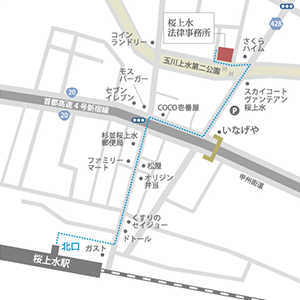Is It a Legal Requirement to Have Reverse Lights
We took a 2017 Chevrolet Impala to check it out, and the backup lights come on — or at least can — light up when you use the key fob`s remote lock feature, regardless of the vehicle`s fuse. Now, we`re not talking about lights that are manually switched separately from your reverse circuit, these would be considered work lights or work lights, and as long as they`re not used on public roads, they don`t count as additional backup lights. Work lamps are designed to provide maximum luminous efficiency in wide flood zones and remotely to illuminate work areas. In most cases, the light from these types of lights exceeds the maximum light output requirements for use on the road. Therefore, these types of lamps are generally not approved ADR or EEC for use as reversing lamps. Semi-trailers require reversing lights for safety and legal compliance reasons. Federal safety regulations have made reversing lights mandatory in vehicles. For vehicles weighing more than 750 kg, functional reversing lamps shall be installed. These lights inform pedestrians that the vehicle is reversing.
If you want to increase the light output of your reverse, we strongly recommend that you consider ADR-compliant options such as the 73120 series or the U-mount 7312 series, both ADR/ECE approved as reversing lights. The purpose of establishing these statutes is to implement the 1958 United Nations Convention, which harmonizes regulations on vehicles for the installation of lamps. A semi-trailer without reversing lights is a sign of negligence. In the event of a violation of lighting regulations, the driver, the truck operator or the employer and vehicle manufacturer have problems. If you want to install backup lights yourself, this video below can be useful for installing backup lights on a van. According to one study, lighting regulation in the United States is usually immediate. The reversing lights are mounted on the dashboard. It has a switch for activation. But backup lights in most vehicles don`t need the switch to activate the lights. They turned on automatically as soon as the reader turned backwards. For a long time, the 12N 7-pin spindle was the most common grip for towing commercial trailers, but it does not include a reverse lighting function. The law also allows unbalanced reversing lights.
This means that each lamp is individually tested to determine if it has met the candle power requirement. However, it wasn`t until 1964 that car buyers were able to order cars with integrated reversing lights. Ford is the first company to offer such an option with its Ford Mustang. Expect plug-in labels built into 13 pins in the coming years. Taillights are usually referred to as backlights. Generally, they are mounted in your semi-trailer to ensure road safety. If you need to test your backup lights but don`t have anyone to help you, there`s a way to do it yourself. Turn the ignition switch to the âonâ position (without starting it), then reverse the transmission with the parking brake engaged. It is very important to ensure that the parking brake is engaged. Once this is settled, get out of the vehicle and look at the backup lights, they should be on. Reversing lights are also called reversing lights. They are used to warn other vehicles and people around the car that the vehicle will back up.
The backup lights also provide some illumination when the car returns. Reversing lights on a vehicle must be white, and they are standard for all vehicles. A 7-pin trailer socket has no reverse light. While a 7-pin outlet powers all the lights of a trailer, reversing lights are excluded. It is designed to illuminate the area around the car at night and can be set to stay on for up to 2 minutes. But other drivers wandering around the parking lot waiting for your seat might be inspired to break a seal because they think you`re taking your sacred time to get out of your seat. The fact that most cars these days have dark windows doesn`t help to understand what`s going on. In addition to the light, the reversing alarm also warns others that a driver is about to reverse. Since Internet forums are now full of opinions and seem to know everything, we thought it wise to discuss ADR and the laws surrounding the use of LED light strips or work lights as backup lights.
We`ll keep it simple, don`t just customize an LED light bar like a taillight without doing your due diligence. Keep this in mind the next time you sneak into a parking lot and see the backup lights of a late GM vehicle that could secure the car, or the owner will simply lock the door as they walk away. If anything, you`ll probably see the feature every time you go shopping. Imagine walking through the supermarket parking lot on a crowded Sunday afternoon. Seats are limited, coveted prices for those with cat reflexes and the courage to meander in and out of traffic without the care of a collision. You crawl down a hallway, looking for someone ready to go, and then you notice taillights – a saving grace. If you stop and wait, the car will not move. Time passes slowly, a row of nervous drivers develops behind you until the taillights differ.
They move on, always looking for a free place. The Federal Safety Regulations made reversing lights mandatory in the late 1960s. In 1968, 108 reversing lights were used in the FMWS. However, laws in countries such as New Zealand and Australia allow yellow lights for taillights. Be sure to ask the seller if backup lights are already mounted before buying a semi-trailer. In addition, reversing lighting is heavily regulated by ADR13. If your vehicle is not equipped with an ADR-compliant reversing lamp, you will certainly receive a warning if you install an LED light strip other than a reversing lamp. Reversing lights are an important safety feature of your vehicle as they inform cars and people around you who will secure you. If someone is behind you or about to pass you, they will know to exercise caution. Test your backup lights regularly to make sure they are working properly. If you turn off a backup light, you can be arrested and get a ticket.
If you have problems with your taillight, you may need to have it replaced. Semi-trailers must be illuminated by reversing lights for compliance and road safety reasons. Reversing lights are an integrated component in some trailers. However, some lights must be installed separately, such as in the travel trailer. But the introduction of reversing lights was the first to be achieved in the 1960s. Unlike brake lights, which were only synchronized in the 1970s. To answer this question of the reversing light of the trailer, we must ask ourselves, what is the weight of the trailer? Does your trailer weigh more than 750 kg? The weight of a semi-trailer is about 11,000 to 37,000 kg. As such, trailers are subject to the law which requires the installation of reversing lights. The process of installing backup lights is time-consuming and requires a lot of tools.



